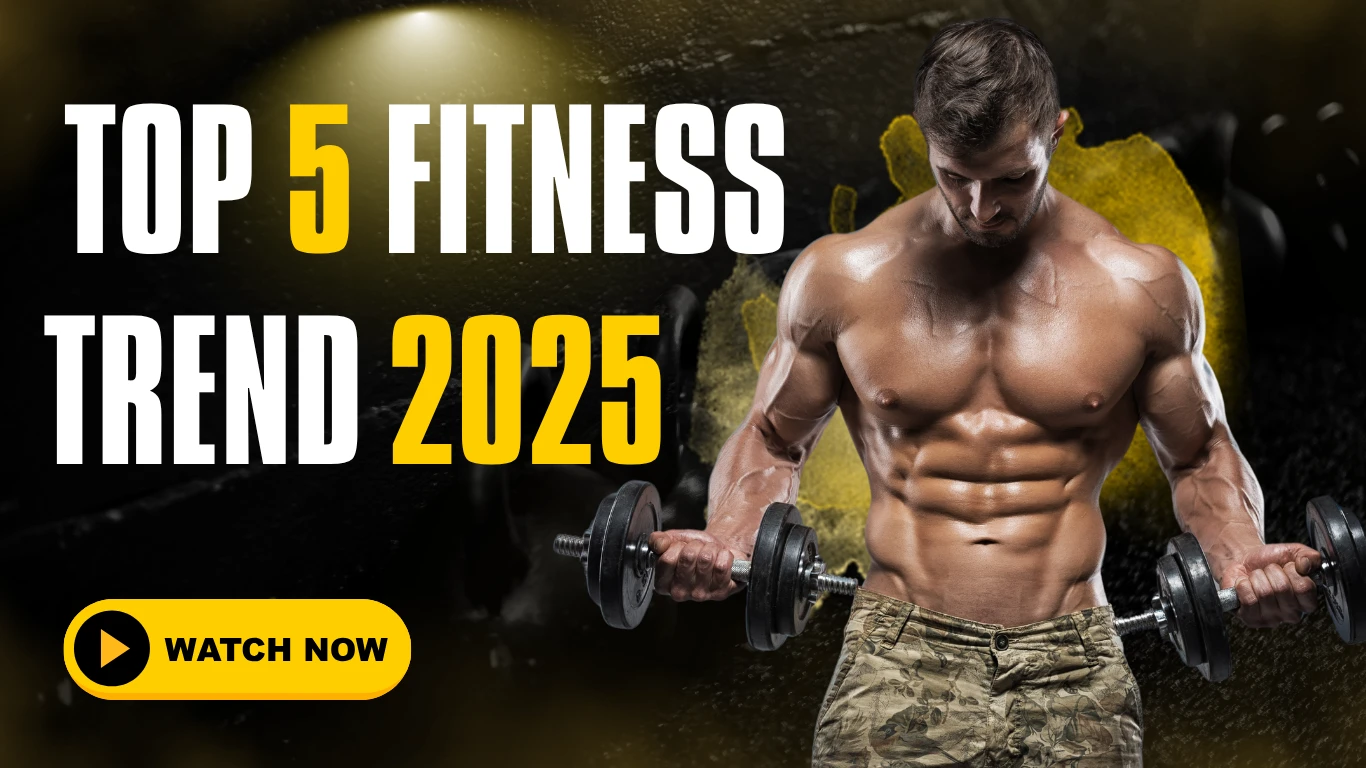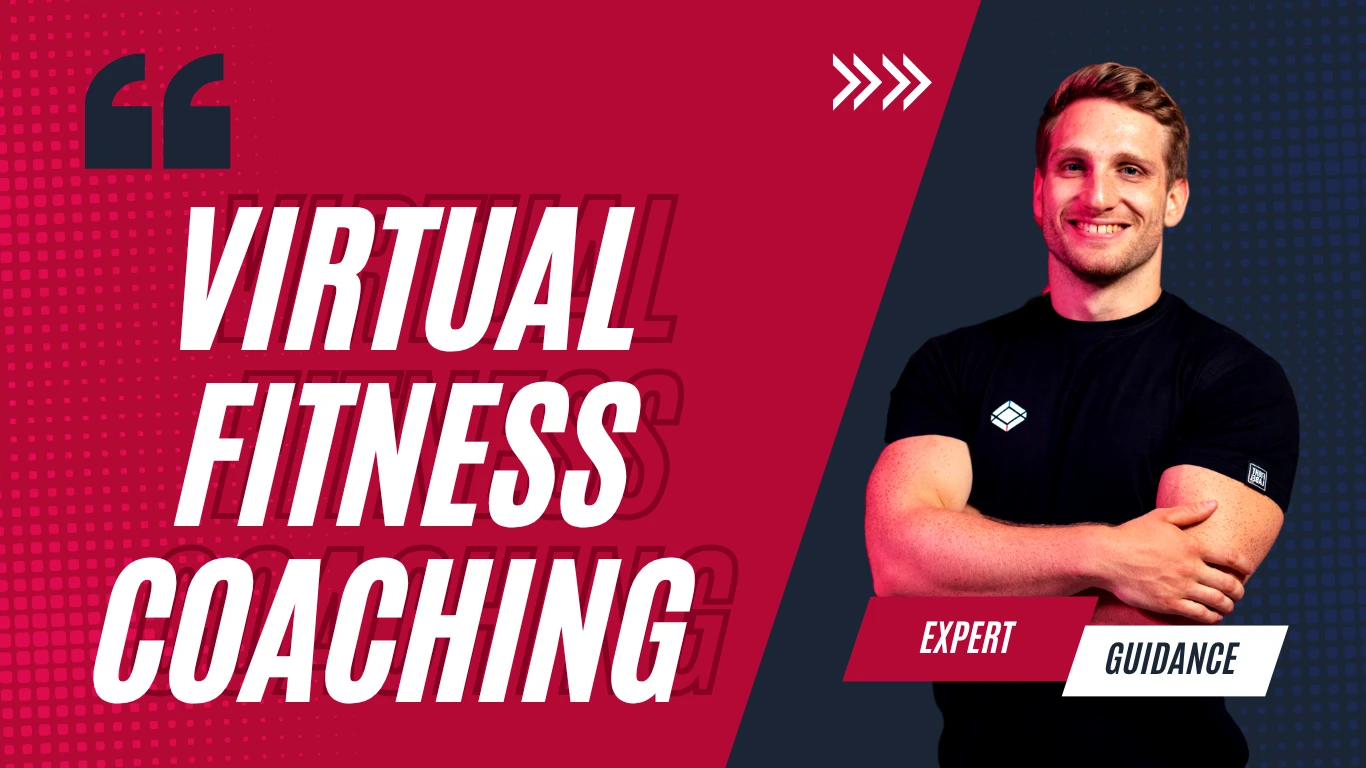What is Functional Fitness
Functional fitness changes as new concepts influence how people prepare for endurance, strength, and mobility. While certain fashions are losing appeal, others are fairly prevalent. Here is what 2025 ought to bring.
What is in it?
Hybrid Training Methods
The gold standard is now workouts combining strength, flexibility, and cardio. This method guarantees equilibrium of fitness and increases general movement efficiency.
AI-Driven Coaching and Wearable Technology
Now tracking biometric data, recuperation patterns, and training intensity, smart fitness devices offer real-time feedback. With customized programs based on user analytics, artificial intelligence coaching systems are displacing conventional personal trainers.
Minimalist Workouts and Space-Saving Equipment
Instead of heavy machines, many fitness buffs are choosing bodyweight exercises, resistance bands, and multipurpose tools. Small setups make home training more easily available.
Sustainable Fitness Gear
Gym accessories and environmentally friendly exercise clothing are becoming really trendy. Purchasing choices for workout equipment are being affected by ethical manufacture and recyclable materials.
Event-Specific Training
There are more and more programs geared for competitive activities such as obstacle races, Hyrox, and endurance challenges. Athletes are now adhering to regimented plans combining strength with strategy.
What’s Out?
Generic Training Programs
Customized routines customized to individual needs are replacing conventional, one-size-fits-all exercise regimens. These days, people look for adaptive training grounded in performance monitoring and data analysis.
Overtraining Without Recovery
The conventional wisdom of persevering through tiredness is under question. Long-term fitness sustainability depends increasingly on recovery-oriented training including mobility drills, stretching, and active rest days.
Excessive Gym Equipment
Practical, movement-based exercises used in functional training help to reduce the need for costly gym equipment. Many are gravitating toward condensed workouts and bodyweight strength training.
Unrealistic Fitness Goals
Extreme exercise challenges and fad diets are losing appeal as fitness buffs give long-term health benefits, mental wellness, and sustainable growth top priority over rapid transformations.
Train Smarter in 2025: Science-Backed Strategies to Optimize Your Functional Fitness Routine
Functional fitness isn’t a trend. This is a long-game plan to develop strength that translates outside the gym, lower your risk of injury, and prepare your body for actual movement. Smarter training in 2025 isn’t about doing more, but doing better. These straightforward, evidence-based strategies will allow you to advance your program to the next level.
Focus on Movement Quality
Form is more crucial than intensity. Research into quality movement trends indicates that they reduce the risk of injury and enhance long-term benefits. Rather than driving through reps, move slow and focus. This process creates your foundation for complex movements and enables you to utilize the correct muscles.
Build a Strong Core, Not Abs
From jogging to grocery shopping, a solid core makes it all happen. But a solid core is more than just six-pack abs. It needs stabilizing muscles that are strong enough to support your spine and maintain you in good posture. Better than performing hundreds of crunches are plank, carry, and controlled turns.
Prioritize Recovery and Mobility
Real progress happens in recuper. Denial of it may result in plateauing of gains and greater likelihood of injury. Science confirms the need for mobility work, active recuperation time, and sufficient sleep. Low-impact exercise, foam rolling and stretching keep you going without burning out.
Train for Purpose, Not Sweat
Functional fitness is not about getting better but about not getting tired. Regardless of whether the goal of each exercise is to improve balance, increase power, or build endurance, it must be apparent. Training that is specific avoids plateaus and leads to long-term growth.
Combine Strength and Stability Power in real life in the form of control and harmony. Doing kettlebells or single-leg training, for instance, puts smaller stabiliser muscles in your program out of balance. Such exercises raise your movement, build your strength, and render you injury-free.
Progress Over Perfection
You don’t have perfect workouts every day. What matters is consistent work and gradual progress. Intelligent training is listening to your body, adjusting as needed, and focusing on the long term.
Move Better Every Day: 7 Functional Mobility Drills for Real-Life Strength
Functional mobility is key to improving daily movement patterns, enhancing flexibility, and preventing injuries. Here are seven simple drills to incorporate into your routine:
1. Squat to Stand
- increases lower body strength and hip and ankle mobility.
- Copies real-life motions including seated and standing.
2. World’s Greatest Stretch
- targets several muscle areas, improving flexibility and thereby lowering stiffness.
- Ideal for starting your day or getting ready before exercises.
3. Hip Bridge
- enhances posture by strengthening glues and lower back.
- Helps offset the consequences of extended sitting.
4. Lunge Variations
- increases balance by strengthening and stabilising legs.
- mimics ascending stairs and walking.
5. Standing Calf Raises
- Enhances ankle flexibility and strengthens calves.
- Reduces the risk of lower leg injuries.
6. Wall Push-Up
- Strengthens upper body and improves shoulder mobility.
- Ideal for beginners or those recovering from injuries.
7. Hinge Movements
- Focuses on hamstrings and glutes, improving bending and lifting mechanics.
- Prevents lower back strain during daily activities.
The Ultimate Functional Fitness Home Gym Setup for 2025 (Budget to Pro Options)
Thanks to space-saving configurations, smart electronics, and flexible gear, building an effective home gym in 2025 is simpler than it has ever been. Whether you’re going pro or on a budget, here’s how to create your dream gym:
Budget-Friendly Options
Adjustable dumbbells let you save money and space by using weights suitable for several workouts.
Affordable and portable, resistance bands are ideal for training in strength and flexibility.
For those who enjoy cardio, foldable treadmills with their small shapes fit under beds or sofas.
Pro-Level Gear
Combining strength, cardio, and mobility training in one elegant arrangement are all-in-one gym machines.
Interactive screens in smart mirrors track your development and offer virtual tutoring.
Digital weight systems are small devices with exact resistance for advanced training.
Space-Saving Tips
- Equipment should be kept on wall-mounted racks.
- Choose multifunctional tools like suspension trainers or kettlebells.
- Set up your gym in a corner or extra room.
Why Functional Fitness is the Key to Longevity in 2025 (And How to Get Started)
Functional fitness is a lifestyle that encourages ageing gracefully, building strength for life, and thriving in daily activities—not just a workout craze. Here is why it’s crucial in 2025 and starting points:
Why Functional Fitness Matters
Real-World Strength
Functional exercises simplify daily chores by simulating common motions like lifting, bending, and reaching, therefore reducing the risk involved in them.
Injury Prevention
Functional exercise lowers fall and injury risk by strengthening balance, flexibility, and joint health.
Longevity Benefits
Keeping strength and mobility helps you to support independence and quality of life as you get older.
How to Get Started
- Start with squats, lunges, and planks to provide a strong basis for core motions.
- Add single-leg exercises or utilise balance boards to include training in balance.
- Maintaining consistency: Set aside twenty to thirty minutes per day for functional activities with long-term benefits.
Functional vs Traditional Training: What’s Best for Your Goals in 2025?
Choosing between functional training and traditional training depends on your fitness goals. Here’s a quick comparison to help you decide:
Functional Training
- Emphasises actual motions such planks, lunges, and squats.
- increases flexibility, core strength, and balance for daily use.
- Perfect for seniors, athletes, or anybody striving for mobility and injury prevention.
Traditional Training
- Targets specific muscle groups with exercises like bench presses and bicep curls.
- Builds muscle mass, strength, and endurance.
- Perfect for bodybuilders or those focused on aesthetic goals.
When to Use Each Style
- Functional Training: Best for improving overall mobility, coordination, and real-world strength.
- Traditional Training: Ideal for increasing muscle size and achieving specific strength goals.
Hybrid Programs
- Combine both styles for a balanced approach. For example, pair functional exercises like kettlebell swings with traditional lifts like deadlifts.
Eat to Perform: 2025 Nutrition Strategies to Fuel Functional Fitness
Fueling functional fitness in 2025 requires a smart approach to meal planning, supplements, and macros. Here’s how movement-focused athletes can optimize their nutrition:
1. Plan Balanced Meals
- Prioritize whole foods like lean proteins, complex carbs, and healthy fats.
- Include nutrient-dense options like quinoa, salmon, and avocado to support energy and recovery.
2. Master Your Macros
- Protein: Aim for 25–30g per meal to support muscle repair and growth.
- Carbs: Focus on moderate-to-high intake for glycogen replenishment and sustained energy.
- Fats: Incorporate sources like nuts and seeds for hormonal balance and joint health.
3. Use Supplements Wisely
- Add creatine for strength gains and BCAAs for muscle recovery.
- Consider magnesium and vitamin D to enhance performance and reduce inflammation.
4. Timing Matters
- Eat protein-rich meals every 3–4 hours to maximize muscle synthesis.
- Refuel with carbs and electrolytes post-workout for optimal recovery.
Functional Fitness for Busy Professionals: 20-Minute Workouts That Work in 2025
Staying fit as a busy professional in 2025 is all about time-saving routines, workplace wellness, and quick wins. Here’s how you can make it work:
1. High-Intensity Interval Training (HIIT)
- Perform short bursts of exercises like squats, push-ups, and lunges, followed by brief rest periods.
- Boosts metabolism and burns calories efficiently in just 20 minutes.
2. Desk-Friendly Workouts
- Incorporate stretches, chair squats, and seated leg lifts during work breaks.
- Keeps you active without leaving your workspace.
3. Bodyweight Circuits
- Combine planks, burpees, and mountain climbers for a full-body workout.
- No equipment needed, making it perfect for home or office settings.
4. Yoga Flow
- Use poses like downward dog and warrior pose to improve flexibility and reduce stress.
- A calming yet effective way to stay fit.
Tech Meets Training: How Wearables & AI Are Revolutionizing Functional Fitness in 2025
In 2025, wearables and AI are transforming functional fitness by integrating smartwatches, apps, performance tracking, and virtual coaching. Here’s how technology is reshaping the fitness landscape:
1. Smartwatches for Real-Time Insights
- Devices like Apple Watch and Fitbit track heart rate, calories burned, and activity levels.
- Advanced sensors monitor sleep patterns, recovery, and stress, optimizing workouts.
2. AI-Powered Fitness Apps
- Apps analyze user data to create personalized workout plans.
- Features like motion tracking and real-time feedback improve form and prevent injuries.
3. Performance Tracking
- Wearables provide detailed metrics on VO2 max, muscle fatigue, and recovery time.
- Data-driven insights help athletes fine-tune their routines for maximum efficiency.
4. Virtual Coaching
- AI-powered virtual trainers offer customized guidance and adapt workouts based on progress.
- Interactive platforms provide motivation and ensure consistency.
Live Stronger: Real Success Stories from Functional Fitness Athletes in 2025
Functional fitness continues to transform lives in 2025, with inspiring stories of resilience and success. Here are some standout examples:
1 Case Study: From Desk Job to Dynamic Life
- Before: A 35-year-old professional struggled with back pain and low energy due to a sedentary lifestyle.
- After: Incorporating functional exercises like squats and planks improve posture, reduce pain, and boost daily energy levels.
2 Case Study : Post-Injury Comeback
- Before: A 40-year-old athlete recovering from a knee injury faced mobility challenges.
- After: Focused on functional drills like lunges and balance exercises, regaining strength and confidence within months.
3 Case Study : Strength for Everyday Life
- Before: A 50-year-old homemaker struggled with lifting and bending tasks.
- After: Functional training enhanced core strength and flexibility, making daily chores easier and pain-free.
(FAQ’s)
Que: What is functional fitness?
Ans: Functional fitness is a type of training that helps you move more naturally during a regular day. Natural movement patterns include squats, lunges, and the plank help one to develop strength, balance, flexibility, and endurance.
Que: What are the leading fitness trends of 2025?
Ans: Top trends for 2025 are hybrid training (combining strength, cardio, and flexibility), AI coaching, minimalist home exercise, sustainable products, and event-based training such as for obstacle racing.
Que: What exercise trends are on the way out?
Ans: Generic workout routines, overtraining, excessive usage of bulk gym equipment, and pursuing unachievable fitness goals are giving way to smart, personalized, and balanced training.
Que: How can one begin functional fitness at home?
Ans: Start with basic exercises such as squats, plank, lunges, and hip bridges. Practice with resistance bands or adjustable dumbbells, with 20–30 minutes per day in the space of an unused room or corner.
Que: How is functional fitness aided by technology?
Ans: Smartwatches and fitness applications monitor your workout, recovery, and progress. AI-powered coaching offers customized plans and immediate feedback to help you achieve better form and results






